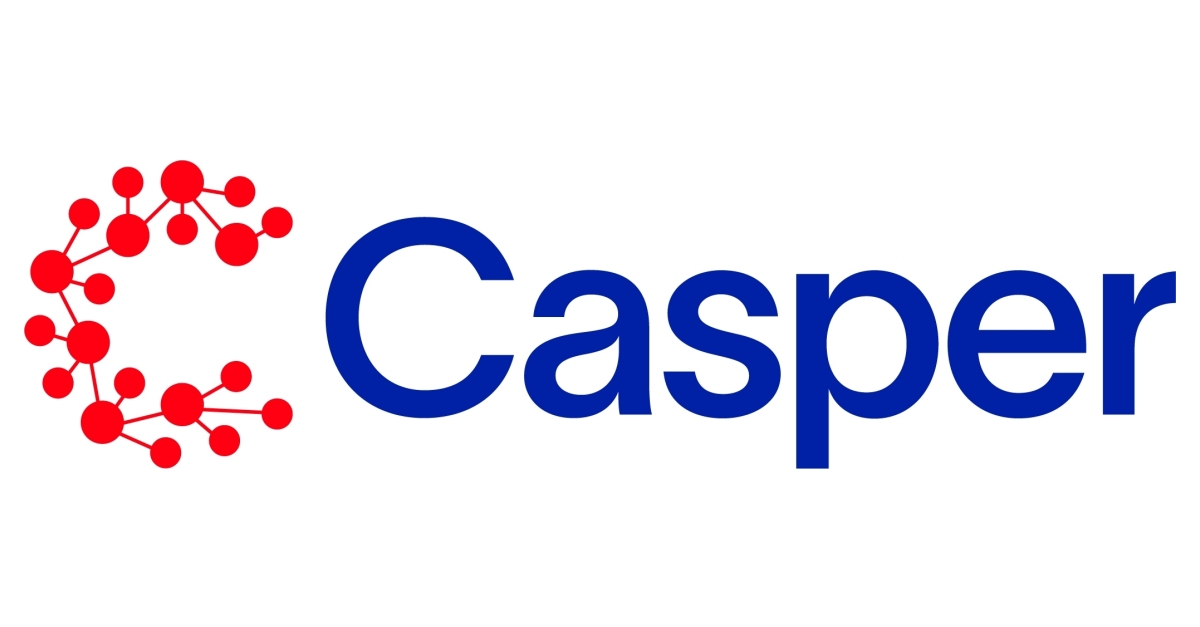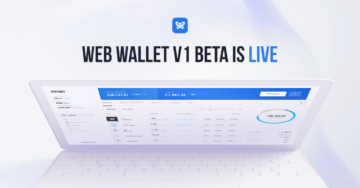
In the world of blockchain technology, the lines between innovation and practicality blur to create an exceptional ecosystem. Dive into the realm of Casper Network, a groundbreaking platform that redefines the conventional standards of security, scalability, and decentralization.
Explore this ultimate guide to Casper, a fascinating odyssey through the world of enterprise-focused blockchain solutions, and discover how this powerful network can transform businesses and the web3 space. Embrace the evolution of Ethereum, and unlock the potential of the Casper Network. Let the journey begin!
Background
The world of blockchain is constantly evolving, with developers eagerly awaiting the next big breakthrough. Unfortunately, many layer 1 chains lack critical features that developers need for seamless integration into application environments and businesses. Recognizing this industry gap, CasperLabs sought to create a cutting-edge blockchain with all the essential elements that developers would find in a traditional technology stack.
Casper, the brainchild of Medha Parlikar and Mrinal Manohar, was founded in 2018 under CasperLabs. The mainnet was launched in March 2021, in conjunction with the Casper Association, a nonprofit organization dedicated to managing the network’s decentralization and growth. Positioning itself as an advanced version of Ethereum, Casper Network adopted the Proof of Stake (PoS) mechanism ahead of Ethereum’s own transition in September 2022.
What is Casper?
Casper Network is a developer-friendly, enterprise-centric public blockchain that uses a Proof of Stake (PoS) consensus mechanism. It offers a strong foundation for creating blockchain-based products quickly, securely, and efficiently.
As a Layer 1 PoS protocol, Casper delivers optimized solutions for businesses and developers, enabling them to harness blockchain technology for scalable, low-cost operations. PoS resolves the blockchain trilemma, which has been a barrier to widespread adoption, by facilitating sharding and greater decentralization of validators based on geographic distribution.
Developers utilizing Casper benefit from features like upgradeable smart contracts and reduced gas fees, avoiding compromises between security, scalability, and full decentralization in their projects. Casper’s thriving ecosystem is driven by its native token, CSPR, and encompasses numerous enterprises and projects in the web3 space, including CeFi, decentralized finance (DeFi), gaming, and non-fungible tokens (NFTs).
How Does Casper Work?
Casper employs a correct-by-construction (CBC) approach, where consensus-building nodes, known as validators, exchange messages to reach an agreement on newly created blocks. A block proposer selects pending transactions and includes their hashes in a proto-block. Following consensus, the block is finalized.
Validator nodes then execute all transactions within the block and update their internal state. They also send a finality signature to confirm that they have executed the block, added it to the linear chain, and updated their internal state accordingly.
Since the mainnet launch in March 2021, Casper has undergone five upgrades, with the team continuously introducing new features based on community and Casper Association feedback. Future releases, such as release 1.5, will feature “fast synchronization,” allowing new nodes to join the network without replaying blocks from Genesis.
Casper 2.0, launched in 2022, introduced various scalability enhancements, including Highway 3.0, host-side DeFi features, and contracts capable of staking the network and paying for smart contract execution.
Advantages of Casper
Casper is a trailblazing blockchain infrastructure designed to unlock the potential of blockchain technology for enterprise-level business operations. It offers seamless integration with existing systems, powerful APIs, and compatibility with other business tools. Key benefits of Casper include:
- Enterprise-grade Solution: Casper caters to enterprises, focusing on privacy permissions, security, and low latency. It enables organizations to choose from public, permissioned, or private network solutions based on their confidentiality needs without sacrificing performance.
- High-end Security: Casper provides a permissionless, decentralized, and immutable blockchain that meets real-world requirements with reduced energy consumption, while ensuring fast, secure, and cost-effective operations.
- User-Friendly Interface: Casper’s interface is designed for easy use, with APIs that facilitate integration with existing enterprise infrastructure and tools, saving time and resources on training.
- Flexible: Casper supports easily upgradable contracts and multiple network deployments, allowing businesses to adapt to changing market trends and maintain customer satisfaction.
- Easy Upgradable Contracts: Casper’s innovative interface enables direct on-chain smart contract upgrades, removing the need for complex migration processes and simplifying vulnerability management.
- Scalable and Speedy: By executing tasks simultaneously, Casper accelerates throughput and improves load balancing, increasing network speed and scalability.
- WebAssembly Support: Casper’s compatibility with WebAssembly allows developers to work seamlessly with existing Web2 ecosystems, avoiding proprietary languages.
- Gas Fee: Casper offers a consistent, transparent, and reasonable gas fee structure, reducing volatility and enhancing the trading experience for developers and users alike.
- Sharding: Casper’s PoS algorithm supports sharding, optimizing performance by dividing work into smaller, faster validator groups or shards, each handling equal workloads.
CSPR Token
CSPR, the native currency of the Casper Network, is a popular investment option for traders and serves several essential functions within the ecosystem:
- Rewarding node participants (validators) who contribute to the network development by participating in the PoS consensus algorithm
- Staking to become a delegator and earn a share of validator rewards
- Paying network fees for on-chain operations
Initially, 10 billion CSPR tokens were created, with an annual inflationary supply rate of approximately 8%. This inflationary tokenomics encourages staking of CSPR tokens to secure the network and support economic activity.
The genesis distribution of CSPR is as follows:
- Non-profit Casper Association: 20.3%
- Validator Sale R1: 19.5%
- Developer Incentives: 16%
- Validators Sale R2: 10.2%
- Coinlist Public Offering: 10%
- Casper Labs Holding AG: 10%
- Team: 8%
- Advisors: 6%
Conclusion
The Casper Network has emerged as a transformative force in the world of blockchain technology. By offering an enterprise-focused, developer-friendly, and highly secure environment, Casper has successfully bridged the gap between traditional technology stacks and decentralized solutions. The network’s commitment to flexibility, scalability, and seamless integration with existing systems makes it an ideal choice for businesses looking to harness the power of blockchain.
As the Casper Network continues to evolve and expand its horizons, it holds the promise of becoming a cornerstone for the next generation of blockchain technology. Embracing Casper means embracing a bright and sustainable future for businesses, developers, and users alike. By exploring the potential of this revolutionary platform, we can together embark on a journey to redefine the possibilities of decentralized technologies and unlock the untapped potential of blockchain at an enterprise level.
- SEO Powered Content & PR Distribution. Get Amplified Today.
- Platoblockchain. Web3 Metaverse Intelligence. Knowledge Amplified. Access Here.
- Source: https://www.asiacryptotoday.com/casper/
- :has
- :is
- :where
- 1
- 10
- 20
- 2018
- 2021
- 2022
- a
- accelerates
- accordingly
- activity
- adapt
- added
- adopted
- Adoption
- advanced
- AG
- Agreement
- ahead
- algorithm
- All
- All Transactions
- Allowing
- allows
- also
- an
- and
- annual
- APIs
- Application
- approach
- approximately
- AS
- Association
- At
- avoiding
- awaiting
- background
- barrier
- based
- become
- becoming
- been
- benefit
- benefits
- between
- Big
- Billion
- Block
- blockchain
- blockchain solutions
- blockchain technology
- blockchain-based
- Blocks
- blur
- breakthrough
- bridged
- Bright
- business
- business operations
- businesses
- by
- CAN
- capable
- casper
- CasperLabs
- caters
- CeFi
- chain
- chains
- changing
- choice
- Choose
- commitment
- community
- compatibility
- complex
- conclusion
- confidentiality
- Confirm
- Consensus
- consensus mechanism
- consistent
- constantly
- consumption
- continues
- continuously
- contract
- contracts
- contribute
- conventional
- cost-effective
- create
- created
- Creating
- critical
- Currency
- customer
- Customer satisfaction
- cutting-edge
- Decentralization
- decentralized
- decentralized solutions
- dedicated
- DeFi
- delivers
- deployments
- designed
- developers
- Development
- direct
- discover
- distribution
- driven
- each
- eagerly
- earn
- easily
- easy
- Economic
- ecosystem
- Ecosystems
- efficiently
- elements
- embark
- embrace
- embracing
- emerged
- employs
- enables
- enabling
- encompasses
- encourages
- energy
- Energy Consumption
- enhancing
- ensuring
- Enterprise
- enterprise-level
- enterprises
- Environment
- environments
- essential
- ethereum
- Ethereum's
- evolution
- evolve
- evolving
- exceptional
- exchange
- execute
- executing
- execution
- existing
- Expand
- experience
- Exploring
- facilitate
- facilitating
- fascinating
- FAST
- faster
- Feature
- Features
- fee
- feedback
- Fees
- finality
- finalized
- finance
- Find
- Flexibility
- focusing
- following
- follows
- For
- Force
- Foundation
- Founded
- from
- full
- functions
- future
- gaming
- gap
- GAS
- gas fees
- generated
- generation
- Genesis
- geographic
- greater
- groundbreaking
- Group’s
- Growth
- guide
- Handling
- harness
- Have
- highly
- Highway
- holding
- holds
- Horizons
- How
- HTTPS
- ideal
- immutable
- improves
- in
- Incentives
- include
- includes
- Including
- increasing
- industry
- Inflationary
- Infrastructure
- Innovation
- innovative
- integration
- Interface
- internal
- into
- introduced
- introducing
- investment
- IT
- ITS
- itself
- join
- journey
- jpg
- Key
- known
- Labs
- Lack
- Languages
- Latency
- launch
- launched
- layer
- layer 1
- Level
- like
- lines
- load
- looking
- Low
- low-cost
- mainnet
- mainnet launch
- maintain
- MAKES
- management
- managing
- many
- March
- Market
- Market Trends
- means
- mechanism
- Meets
- messages
- migration
- multiple
- native
- Native Token
- Need
- needs
- network
- New
- New Features
- next
- NFTs
- node
- nodes
- Nonprofit
- numerous
- of
- offering
- Offers
- on
- On-Chain
- Operations
- optimized
- optimizing
- Option
- or
- organization
- organizations
- Other
- own
- participants
- participating
- paying
- pending
- performance
- permissioned
- permissionless
- permissions
- platform
- plato
- Plato Data Intelligence
- PlatoData
- Popular
- PoS
- positioning
- possibilities
- potential
- potential of blockchain
- power
- powerful
- privacy
- private
- processes
- Products
- projects
- promise
- proof
- Proof-of-Stake
- proprietary
- protocol
- provides
- public
- public blockchain
- quickly
- r2
- Rate
- reach
- real world
- realm
- reasonable
- Reduced
- reducing
- release
- Releases
- removing
- Requirements
- Resources
- revolutionary
- sacrificing
- sale
- satisfaction
- saving
- Scalability
- scalable
- seamless
- seamlessly
- secure
- securely
- security
- September
- serves
- several
- sharding
- Share
- simplifying
- simultaneously
- smaller
- smart
- smart contract
- Smart Contracts
- Solutions
- Space
- speed
- stack
- Stacks
- stake
- Staking
- standards
- State
- strong
- structure
- Successfully
- such
- supply
- support
- Supports
- sustainable
- sustainable future
- synchronization
- Systems
- tasks
- team
- Technologies
- Technology
- that
- The
- The Block
- the world
- their
- Them
- theme
- they
- this
- thriving
- Through
- throughput
- time
- to
- together
- token
- tokenomics
- Tokens
- tools
- Traders
- Trading
- traditional
- Training
- Transactions
- Transform
- transformative
- transition
- transparent
- Trends
- ultimate
- under
- unfortunately
- unlock
- untapped
- Update
- updated
- upgrades
- use
- users
- Utilizing
- Validator
- validators
- various
- version
- Volatility
- vulnerability
- was
- we
- Web2
- Web3
- Web3 space
- were
- What
- What is
- which
- while
- WHO
- widespread
- will
- with
- within
- without
- Work
- world
- would
- zephyrnet








